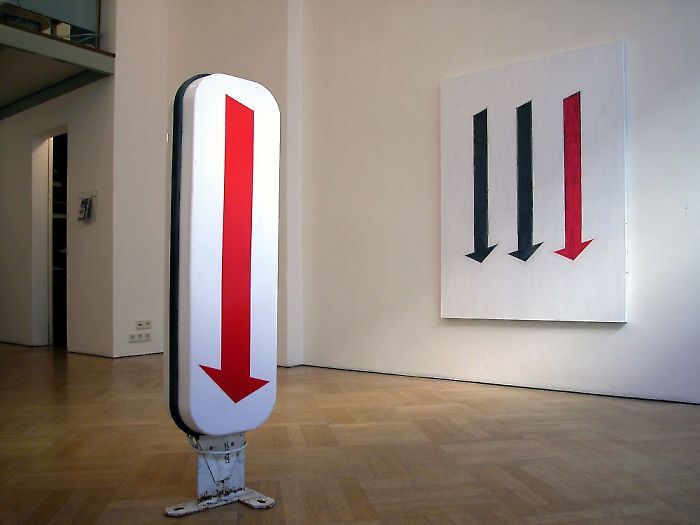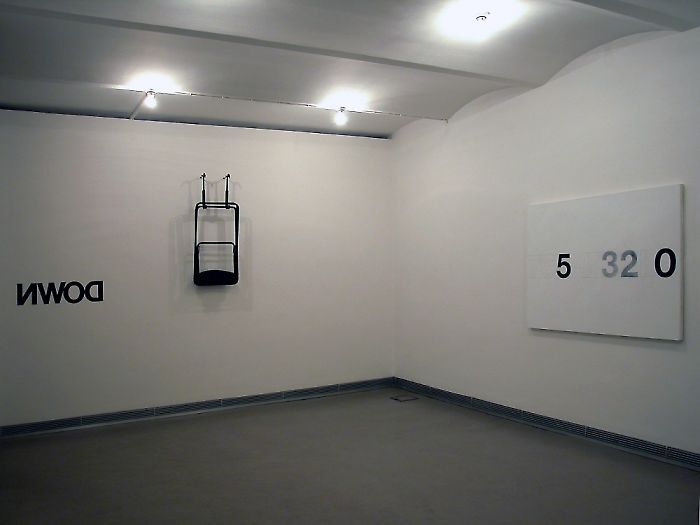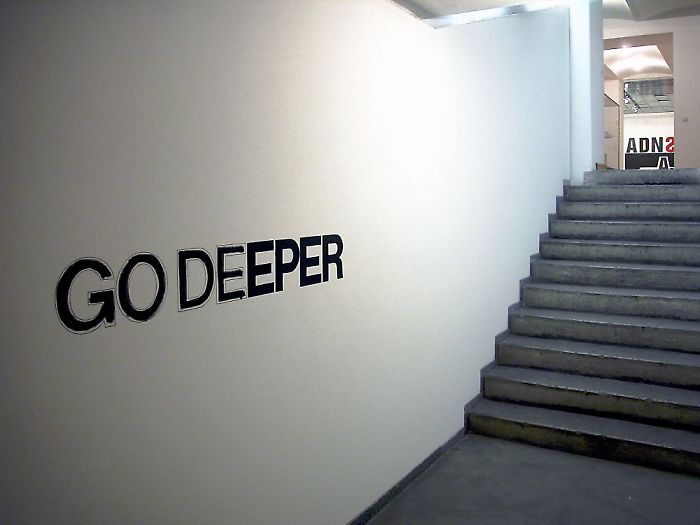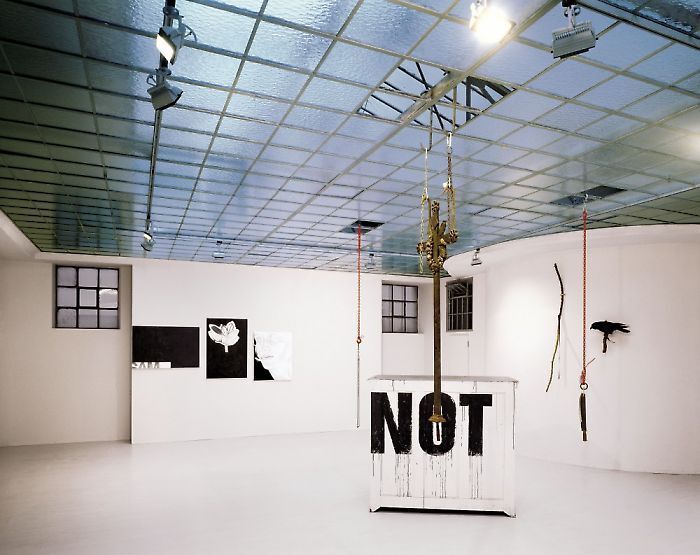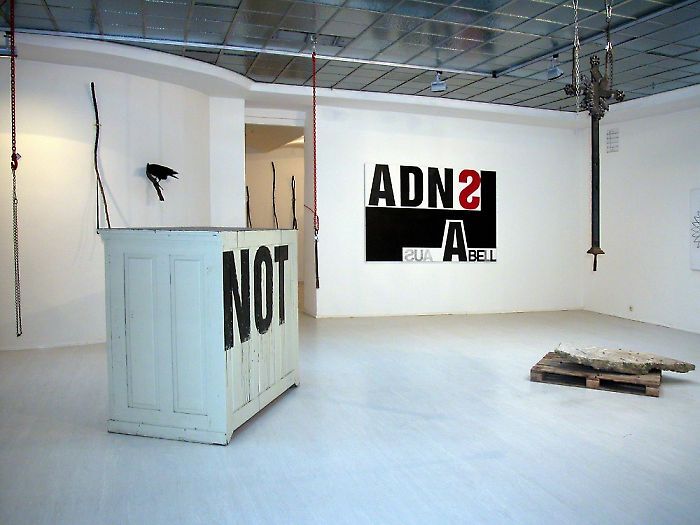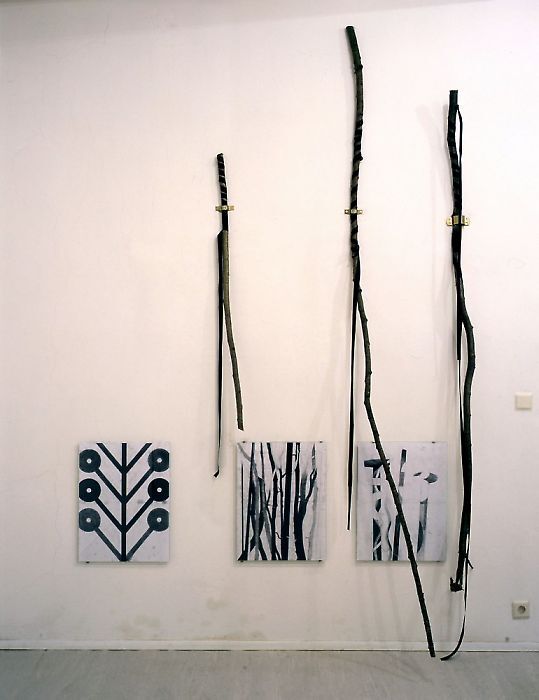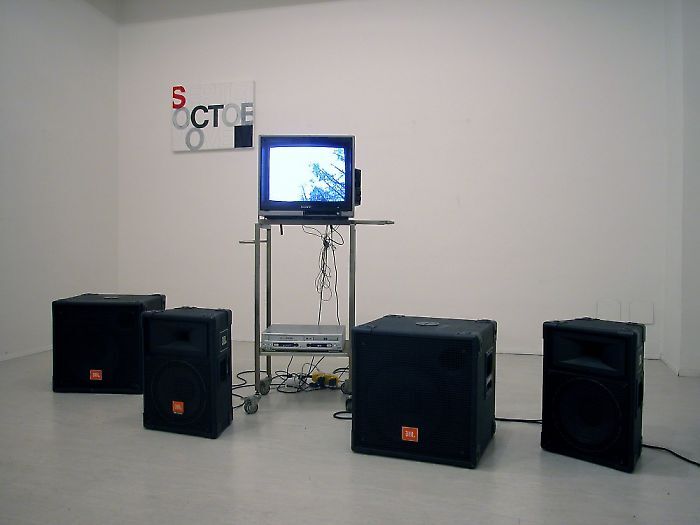—
Franz Graf
LOVEMYDREAM
LOVEMYDREAM
versuche ein wenig ordnung in meine arbeit
für georg kargl gallerie -LOVEMYDREAMzu
finden
auch für dich als hilfe was ich ausgegangen binn
zum unterschied von der julius hummel ausstell.ist
bei georg nichts erotomanisches zu finden.
eher zu den begriffen
ALLER SEELEN ALLER HEILIGEN SOWIE FRIED HOF
als abwärtsbewegung
DOWN
sowie die galerie selbst für mein
empfinden unter der erde zu liegen scheint
man geht da tatsächlich hinunter
um dann wieder
aufzutauchen unter einer milchglasdecke
ich habe leuchtkästen d
die nicht mehr leuchten erloschen
ein grosses bild wo ich teile der wandmalerei
von meinem waldviertel haus übertragenhabe
ADNS
AUS A BELL
wie initialen von namen
die an der hausmaueraussenwand
gepinselt sind
habe auch ein bild
das heisst
REH
weiters ein frauenporträt schwarz
den schrank wie eine kiste
aus der akademie
wo
NOT
draufsteht
ein bild mit textfragment
.......SAM
sowie ein schwarzes eisenkreuz wie ein schwert
weiters einen stein
möglicherweise aeste von die baeume
was ich umgesägt habe
Franz Graf is back.
For quite some time now we have had to do without him. In the past few years, Franz Graf has decided to shun most of the city’s classical art spaces, museums, and galleries. He has devoted his attention to (at least) 90 students attending his class on the “Extended Painterly Space” at the Academy of Visual Arts. He works, talks, eats, drinks, and plays music with them—whatever is necessary to do justice to an interdisciplinary notion of art.
When contacts with the exhibition genre could not be avoided, Franz Graf opted for off-mainstream appearances. If you were an Icelander, for example, it was not difficult for you to convince him of a group show. Franz Graf, himself a nononsense guy, loves the barren landscapes of the North, he loves exhibitions put on by artists for artists, and he loves displays of art at unexpected locations. Fashion victims were both scared and happy when they saw Graf’s meticulously inscribed little branches painted in white, dangling from the ceiling of a posh Viennese boutique. And he also loves art staged as a promise not kept. In vain, his faithful followers trundled from one location to the next to look for much-anticipated Graf artifacts on Viennese market squares where farmers like to display their produce.
Today Franz Graf lives in a rural region. His lifestyle has always impacted heavily on his oeuvre, and the barren landscape around the Lower Austrian town of Gföhl has clearly left an imprint on the surfaces of his works.
Franz Graf is back.
Let’s remember his artistic concept of interconnecting and overlapping various media. Let’s remember his subtle drawings on transparent paper, dematerialized by translucent light. Let’s remember his geometry, his ornaments, his symbols, his emblems, his sketches, his abstraction, and his figurativeness. And let’s always remember Franz Graf the botanist. His motifs have reappeared—his detached black-and-white, and of course his language, an accent clarifying his work. It’s a language which conveys content and, as a graphic element, is pure form, independent of this content.
Galerie Georg Kargl is probably better suited than most other locations in Vienna to showcase Franz Graf’s oeuvre. Its highly diverse rooms are an ideal setting to release the artist’s energies. He talks about a downward movement, DOWN the staircase into darkness, and about going UP, resurfacing in a light-suffused hall covered by frosted glass. In the up and down of the basement, Franz Graf composes by using paintings, photographs, and drawings. The borders between art space and artwork become blurred, mainly due to his juxtaposing and combining various elements. The sparing and even modest use of resources stresses the complexity of his artistic commentary; the latter never approaches us as a pompous, roaring entity, but is conveyed as a sensitive, silent, minimalist, and yet compelling message.
Franz Graf has also brought some of the objects of his farmhouse into the gallery—a fragment of a mural painting, individual letters which, in a manner similar to initials, are painted on the façade, an old closet made of soft wood. On its back side, Graf painted the word NOT. In German, “Not” means suffering, scarcity, need. In our global lingua franca English, however, it denotes a negation. Words and fragments of words merely constitute fiction and inspiration rather than a commentary or a theory, loose combinations that trigger associations with reality at different levels of symbolism. A text’s subjectivity does not render it implausible. By using a plethora of intermediate shades, Graf models an ambivalent as well as probing state of coincidence and regularity, order and chaos.
Franz Graf’s oeuvre—both ambiguous and complex—can never be comprehended at first sight. The rough-hewn nature of his work leaves many questions unanswered. He has crafted an art that is often incomplete, unpolished and yet highly promising and boundless. (B. Huck)
Inquiry
Please leave your message below.
